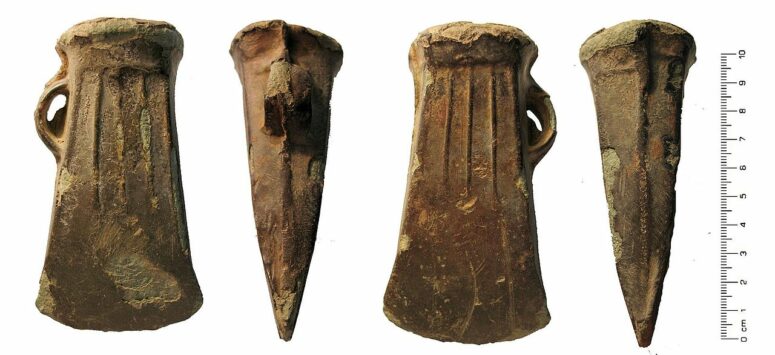Iron is a crucial material that humans have depended on for over 3,000 years. It holds up our buildings, allows our cars to have bodies, and keeps our fridges cold, to name a tiny handful of uses. But where did it all begin?

Bronze axe and spear heads, about 1,200 years old. Image By The Portable Antiquities Scheme/ The Trustees of the British Museum, CC BY-SA 4.0. Wikipedia
Before iron, humans used bronze for their tools, weapons, and art. It was the strongest material of their time, and was used in axes, spears, razors, ornaments, buckets, and horns, among other things. Then, in 1500 BCE, somewhere in Mesopotamia (the modern Middle East), people started to recognise the strength, workability, and lightness of iron compared to bronze. With advances in metallurgy, they were able to melt iron in their bloomeries, and discovered the material to be supple, easily manipulated, and hardened to an incredible strength when cooled. The technology spread to southeast Europe through Greece and Italy, and eventually over the English Channel to the British Isles. It also spread to Central Asia.

Iron swords used by the Han dynasty in ancient China. By Flickr user Gary Todd – Military Museum: Ancient Weapons; Now at Flickr, CC BY-SA 4.0
It’s important to note that there isn’t a single Iron Age for the entire planet that can be said to start at a certain time for everyone. Because of the distance between various civilisations, and the spontaneous and fluid discovery of iron metallurgy, every subcontinent has its own Iron Age, and its own accompanying start date. For example, the European Iron Age is thought to have begun around 800 BC (specifically in Central Europe), and the Indian Iron Age sometime between 1500 to 300 BCE. It’s impossible to pin down exact dates for each subcontinent because there were so many different tribes living in these areas, each of which had to make the crucial change from bronze to iron separately.
Initially, iron was only used for personal ornaments, small knives, and as a way to repair bronze items. Bimetallic items were also made.1 But its suitability for weapons and farming equipment became apparent—a revolutionary move that made people tougher warriors and more efficient farmers. The fate of iron was sealed. Tribes could suddenly travel much further, migrating to different parts of Europe or Asia and protecting themselves from attack along the way. They could also conquer any people they came across. This gave them access to places with greater potential and prosperity, and when they did decide to settle down, they could use their newly-made ploughs and sickles to produce significantly more food. Population growth catapulted and turned villages into towns, and towns into cities. With a greater surplus of food, people could also spend less time hunting and foraging, and more time on activities like making salt, sewing clothes, and crafting jewellery—all of which could be traded with other civilizations.

Half of a pair of iron scissors, from the late Middle Ages. By Raakvlak, CC BY-SA 4.0, Wikipedia
In Europe, the spread of iron was mostly undertaken by two cultures—the Halstatt, who originated in modern Austria, and La Tène who came from the Western European region of Gaul. This shifted the focus of trade from northern Europe to south-central Europe, which expanded Mediterranean civilizations and made drastic changes to how people lived. Social organisation started to emerge, proto-urban settlements, hierarchical social structures, and ideological structures. Iron literally changed the destiny of Europe, Asia, and other subcontinents where it was independently discovered or adopted, and paved the way for our modern world.
Iron has remained crucial throughout history and powered the Industrial Revolution which turned Britain into a global force. It eventually led to steel—an alloy of iron and carbon—which was much stronger and remains the material of choice for today’s buildings, railroads, and so many other things.
References

